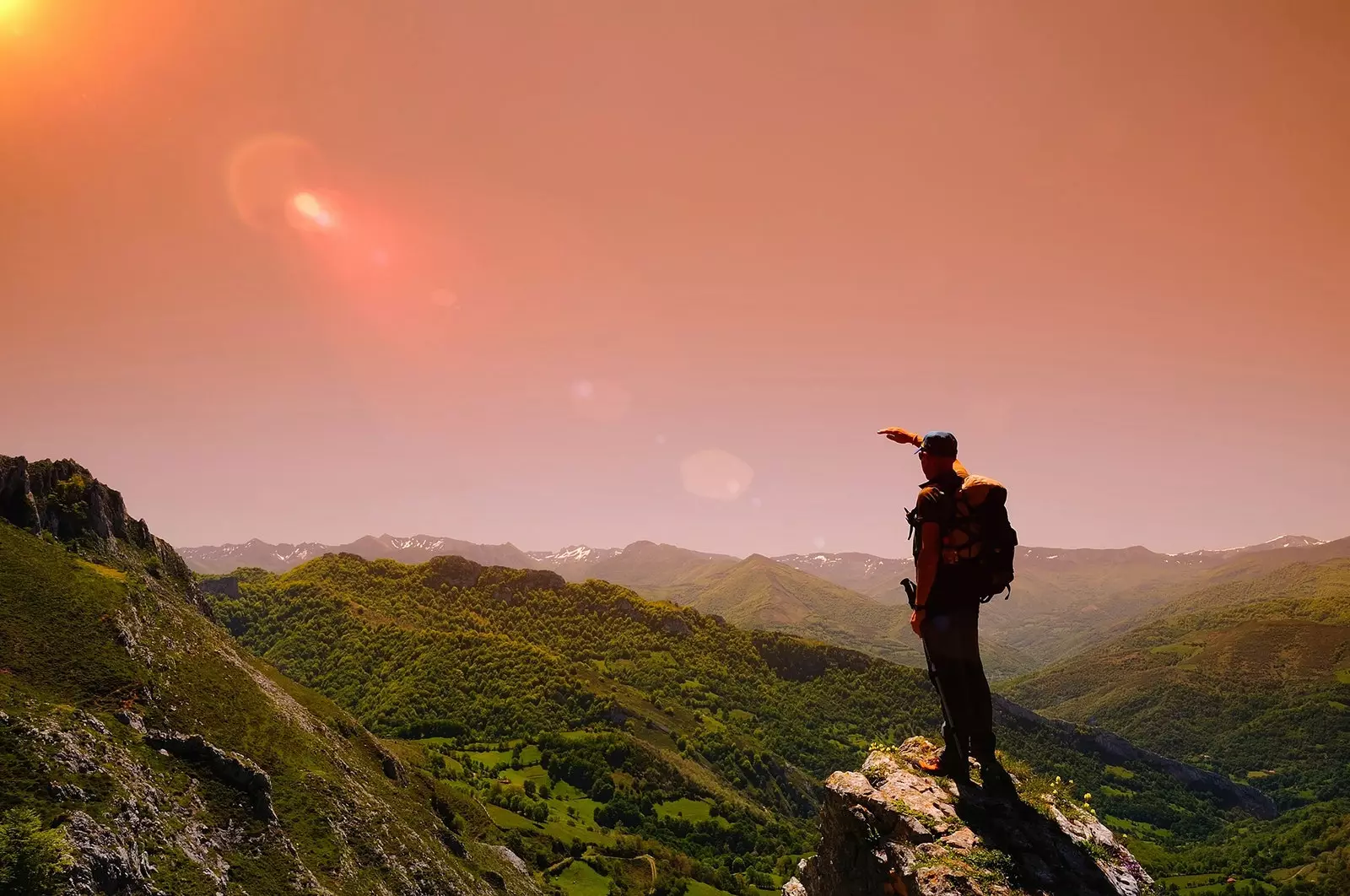
yosemite can wait
Let us surrender to the magnificence of the Bulnes orange tree Let's get lost in the thicket of thug's forest , let's challenge the Cares river gorge and let's take a deep breath when we get to the Lake Enol.
These are the Picos de Europa, the domains of King Pelayo and the Virgin of Covadonga; the first national park in Spain for a hundred years and to which we will pay the tribute it deserves with a trek through its most emblematic places. But, first of all, How was the Covadonga Mountain National Park born?
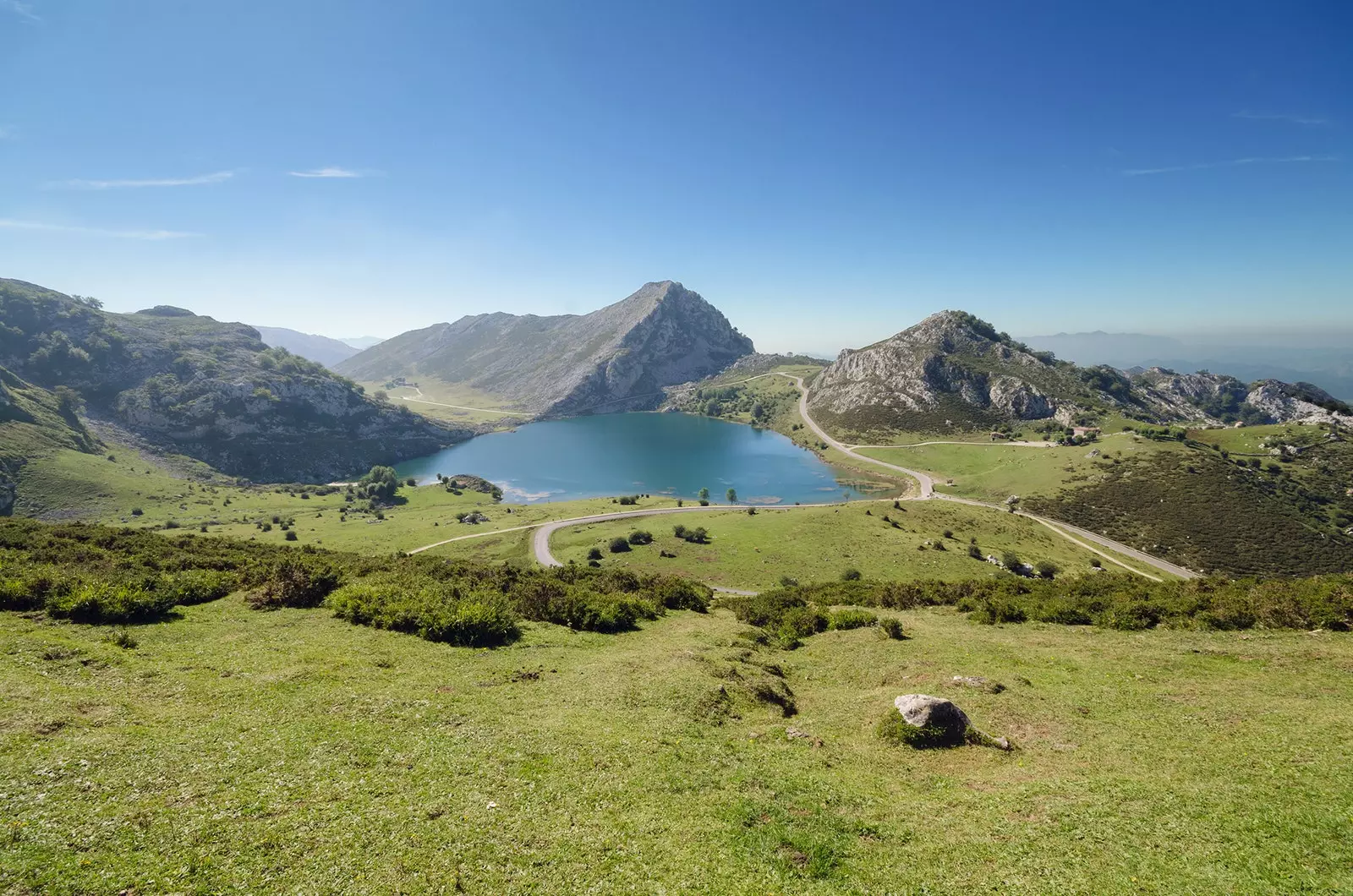
Lake Enol
YOUR FAVORITE CHOOSE HUNTER
Asturias, 1904. the French, In a military effort to map half the world, they reached the Picos de Europa and crown its main summits except for one.
The Naranjo de Bulnes or Pico Urriellu, among Asturians, it was the last great peak yet to be conquered; a calcareous monolith of 2,519 meters on the Massif Central that even today it seems inaccessible.
At that moment, Pedro Pidal, Marquis of Villaviciosa and deputy to the Cortes in a display of patriotism decides to climb the most mythical mountain of the Cantabrian Mountains. And he does it in the company of Gregorio Pérez "El Cainejo" thus starring in the first great feat of Spanish mountaineering.
“That is when he began to be interested in the landscape, sports and tourist value of the Picos de Europa” explains Luis Aurelio González, doctor in political philosophy with several publications on the region, "until then his favorite hunting ground for chamois".
With his new “eco” mentality, he travels to the US to discover the sanctuaries of nature tourism: the Yellowstone and Yosemite parks. In the latter he goes up to Glacier Point to contemplate the colossal picture of the canyons, waterfalls, redwood forests and granite mountains that were already beginning to be a magnet for tourists.
"If they can, why can't we?" Pidal must have thought. The mass of Naranjo de Bulnes has little to envy to that of Captain ; neither the Cares gorge to the Tenaya canyon, nor the Urdiales viewpoint to Glacier Point. The latter only needed a road to compete with the Californian, but the Marquis would take care of that.
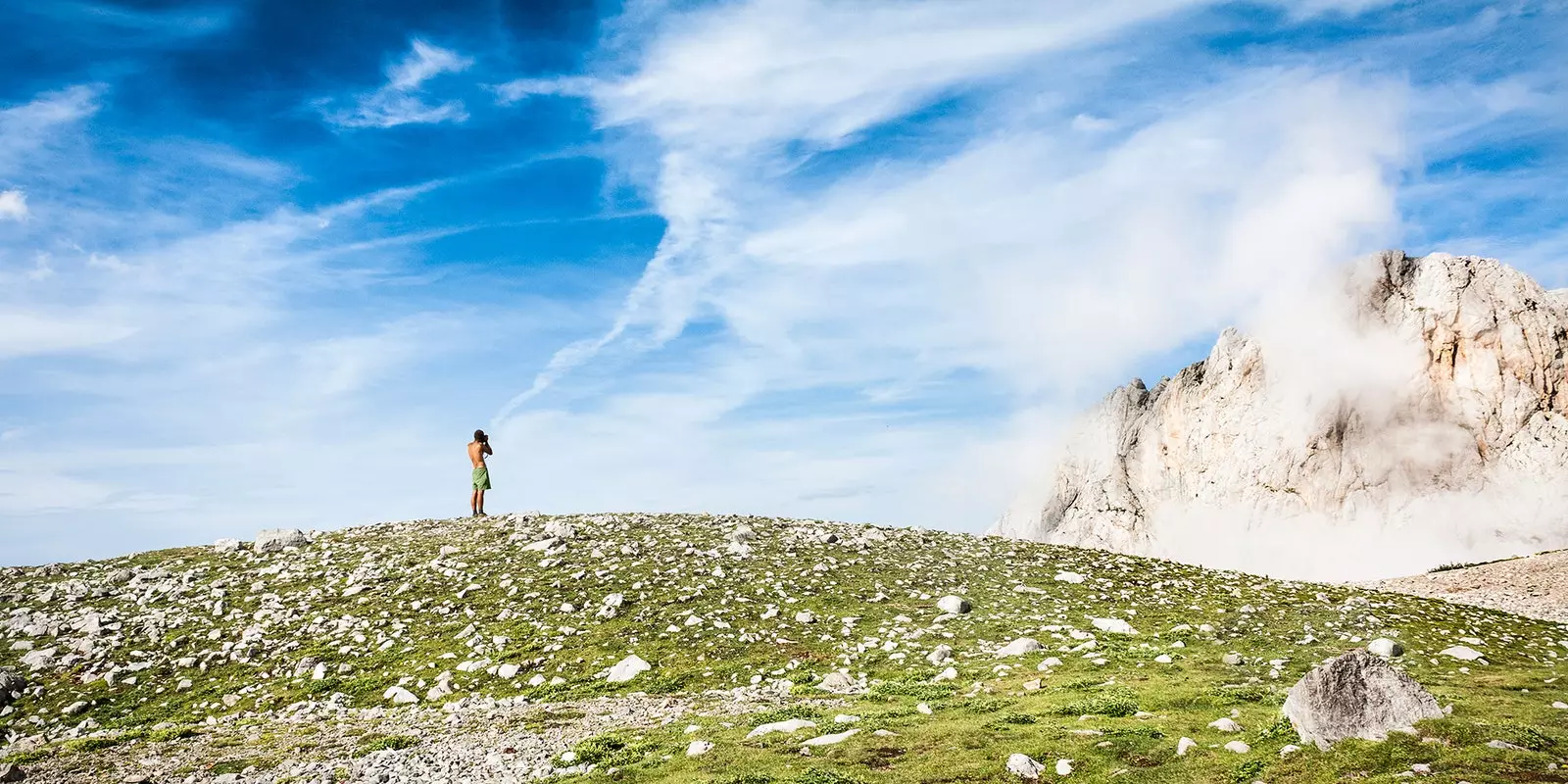
Vega Urriellu
And in this way, on July 22, 1918, to the surprise of the press who saw it as another of Pidal's eccentricities , the first national park in Spain is inaugurated, that of the Montaña de Covadonga, where history, nature and mysticism merge into one.
FROM PELAYO TO PIDAL
And we will merge with him ; starting in the place where King Pelayo would forge the legend of him, Covadonga , (Cangas de Onis) to finish in the one where Pedro Pidal would also forge his own: the Naranjo de Bulnes.
But let's be careful, the mountain does not forgive. The Picos de Europa (67,455 ha) are formed by three massifs between Asturias, León and Cantabria, with a changing weather and nature, since sharp ridges of 2,600 meters a bucolic grasslands almost at sea level.
A sunny day on this pass can turn rainy upon reaching the next valley, or cloudy, which is much worse. But don't panic we have everything under control.
In our team of "Explorers of Picos" you will not be able to miss the hiking boots, waterproof and warm clothing (welcome to the North) , sun cream, map, first aid kit and enough water.
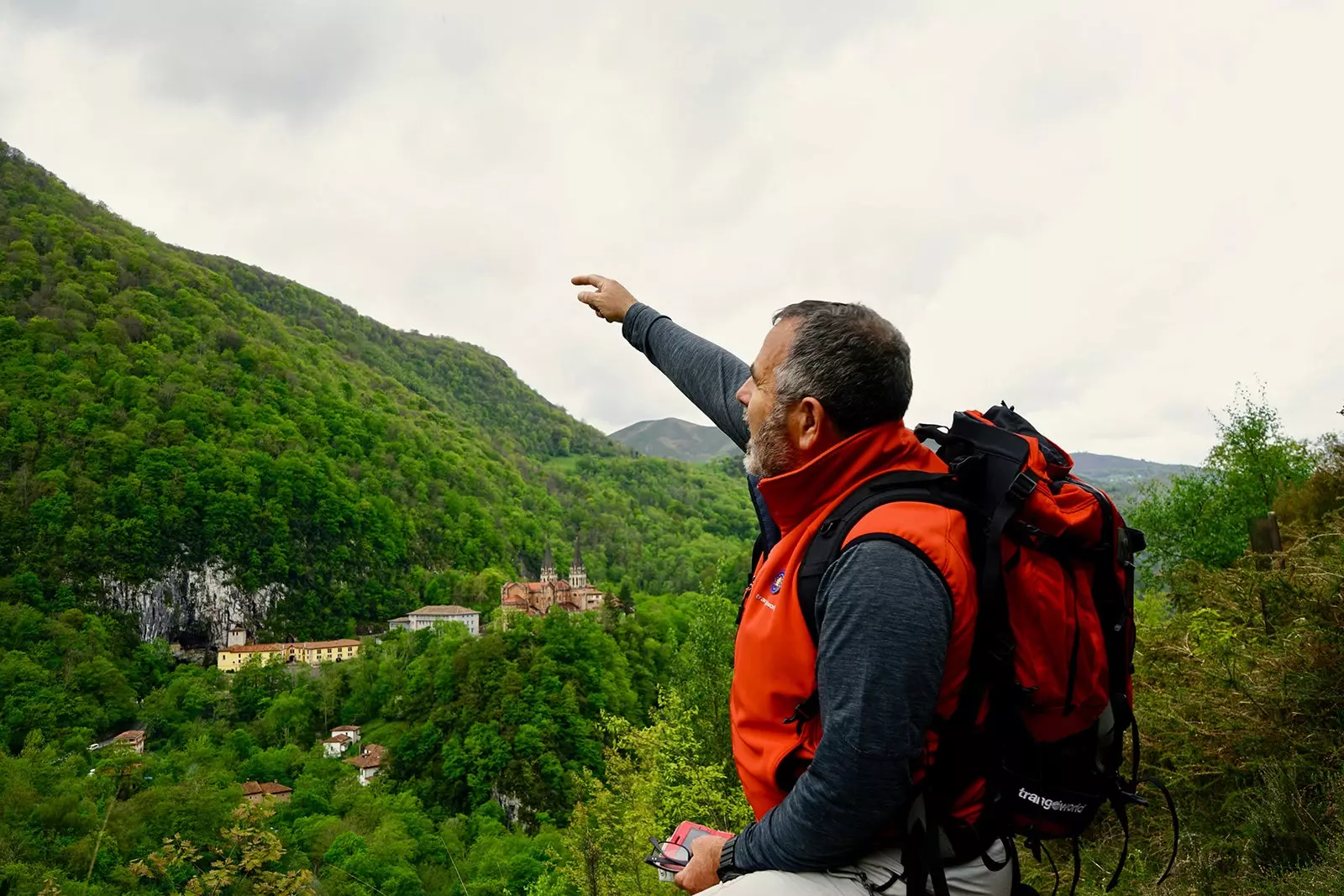
Covadonga from the Cruz de Priena
Check the weather It will avoid more than one disappointment and plan the route ahead of time It is always the most recommended. We will do it with Fernando Ruiz, THE guide of Picos de Europa (and there are a few) that for more than 30 years have been organizing tailor-made excursions from their hostel in Casa de la Montaña (Cangas de Onís).
In the Sanctuary of Covadonga we forget the car and let spirituality take over us as does the entire valley among an exuberant nature. A deep forest of beech and oak climbs from the valley of the river Reinazo to the mountains of La Matona, Cruz de Priena and Auseva where is he hiding the Virgin of Covadonga in her Holy Cave over a waterfall.
We climb the stairs that lead to the Basilica, of neogothic elegance and rosy complexion that makes her shine in the midst of the foliage. At its gates, a King Pelayo statue still defends the site today and since 722, commemorating the place where the first great battle of the Reconquest would win.
After this natural explosion and between a mystical halo we head east to cross the Macizo del Cornión (Western) and conquer the imposing Urrieles (Central) until reaching the most emblematic of the Asturian mountains. Let's get ready to go up.
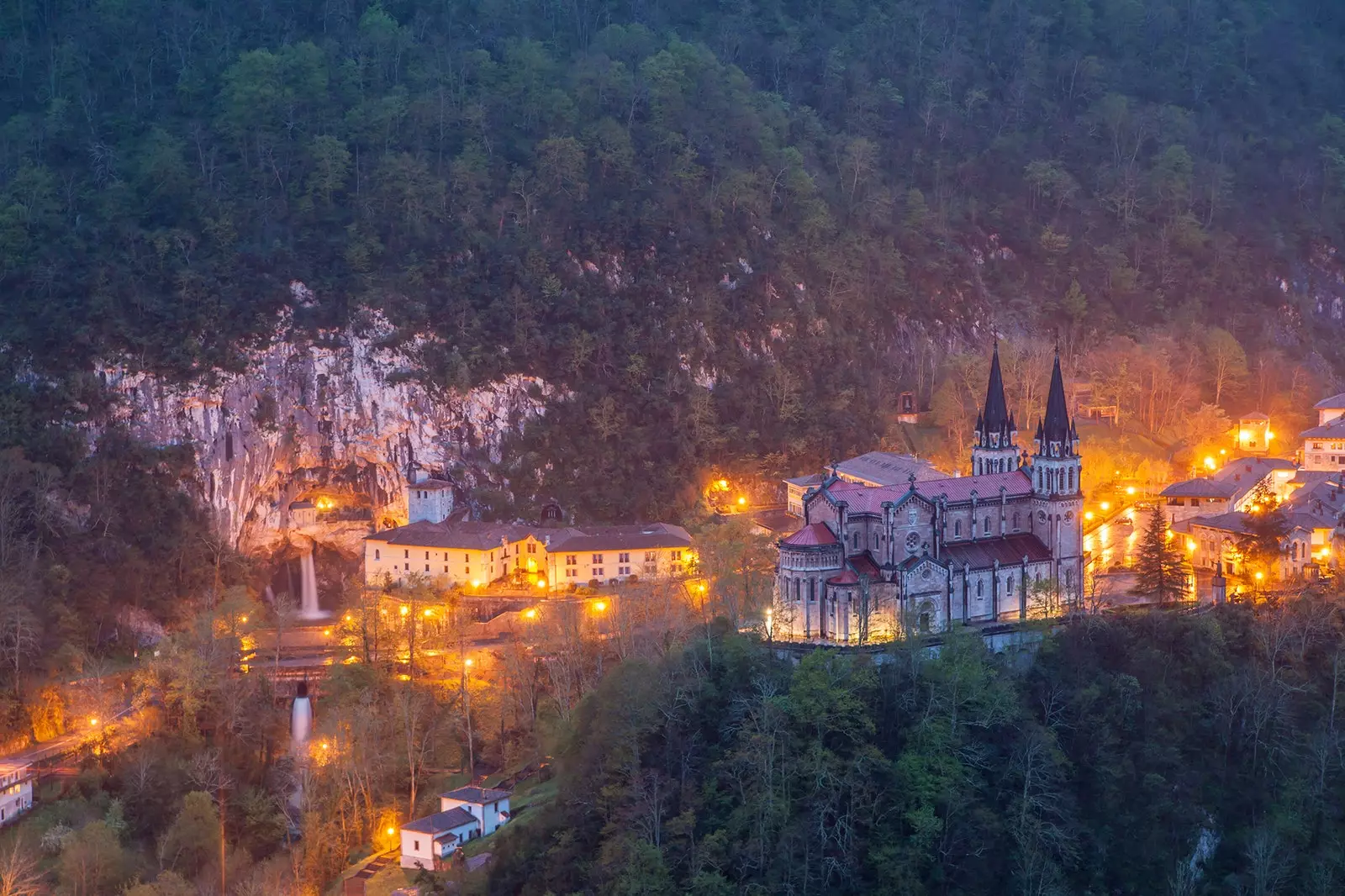
Basilica of Covadonga
The slope of San Ginés allows us to dominate the slope of the Cruz de Priena and witness the monumental panoramic view of the Sanctuary from the top
We walk along the path that runs between hazelnut trees, streams, paths and hills until **the Covadonga lakes road (CO-4)**, where the buses give way to the leisurely cows and heroic cyclists who emulate one of the most iconic stages of the Vuelta a España . Before taking the car **it is advisable to consult the access plan on the park's website. **
A rocky track frees us from the tiresome asphalt and leads us to the Collado de Uberdón, that protects the Vega de Comeya from the strong wind. From this muddy plain We will climb through the El Escaleru tunnel to the outskirts of the Covadonga lakes.
Is now time for rest and meditation, to lie down on the banks of the Enol and the Ercina and see the still snow-capped peaks reflected in their waters. A most bucolic picture, if the herds of tourists do not spoil it.
The House of Shepherds of Vega de Enol (35 €), it will be a good place to spend our first night in the mountain.
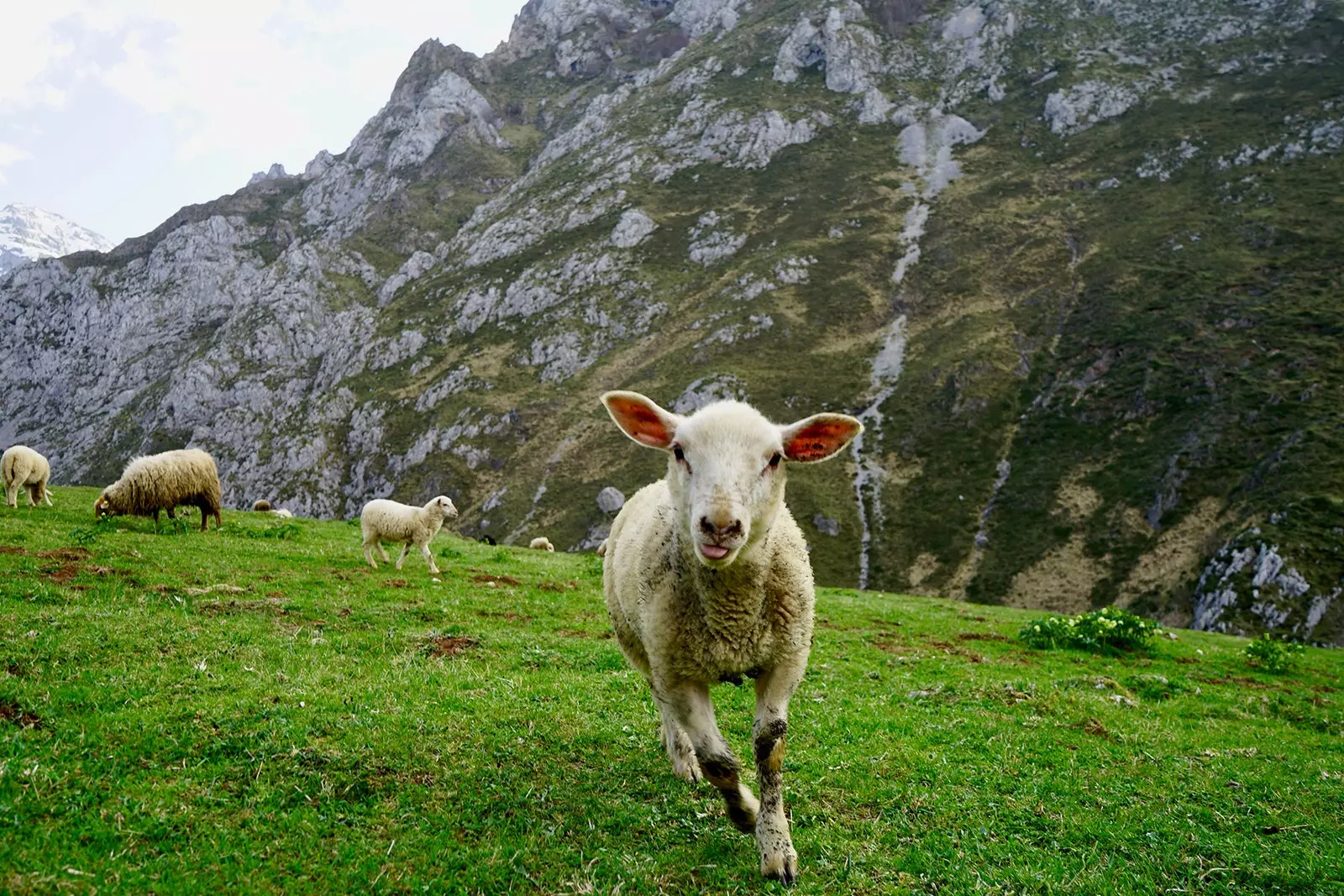
The sheep reign next to the winter cabins of Sotres
The path that starts from the fields of Tiese and gets lost in the mountains evokes our Pidal spirit and invites us to continue walking. Heading southwest, we climb to the sheepfold of Bobias to continue along the hill of Cabeza la Forma (1,717 m) to Collado de Jito.
These are the Picos de Europa that we had been told about. The soft grasses give way to sharp limestone ridges and the friendly casina cows give way to chamois, which climb the snowy slopes as if nothing had happened.
Before us, one of the most spectacular pictures of the national park unfolds with the Urrieles peaks forming a gigantic wall of limestone ridges. on which stands the Torrecerredo (2,648 m), the roof of the Cantabrian Mountains. Who remembers Yosemite now?
The jokes are over, **we have ascended to 1,631 meters and we still want more, but let's first rest in the Vega de Ario refuge** (15 €) , and let's review with the expert mountaineers our next stage: the Trea canal.
Slowly and very carefully. This awesome path 1,200 meters of unevenness through caves, rocks and the occasional oak, ending in the most famous gorge in the park, the Cares, and requires good physical shape and little fear of heights.
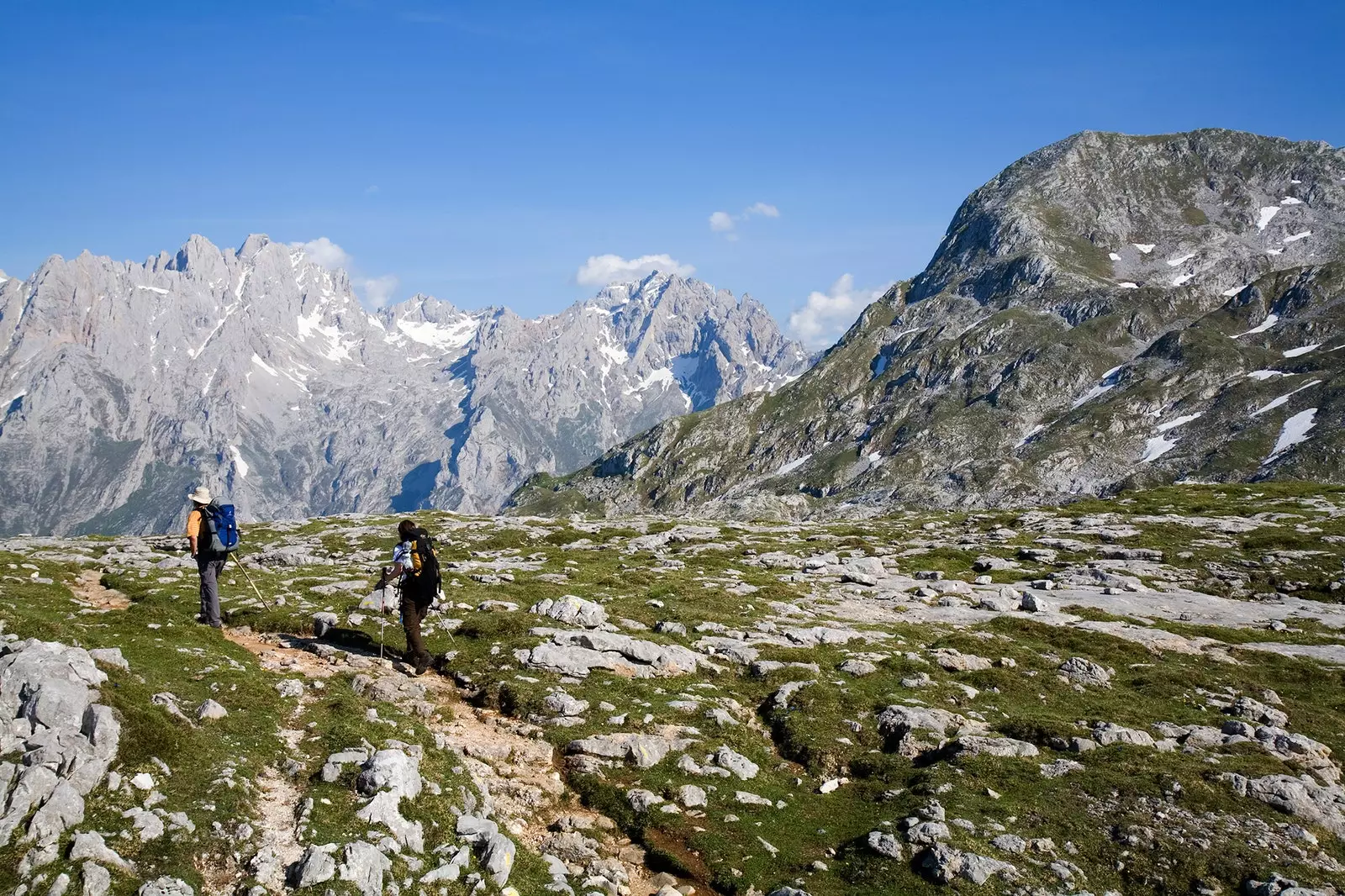
Vega of Ario
After Trea, walk through the “divine throat” turns into a gentle walk with wonderful views of this gorge carved by the Cares between mountains of more than two thousand meters.
In two hours we arrive in Poncebos where we will make a climb (yes, another) by the channel of the river Tejo (GR-202) until reaching Bulnes (Cabrals).
The funicular that connects Puente Poncebos with this village it is also a very valid option (22 € round trip), although quite expensive.
Isolated in the middle of the mountain, Bulnes is one of the most picturesque towns in Asturias , with just 20 inhabitants and endless anecdotes to tell. We asked the locals for the best route to Naranjo de Bulnes. “Orange tree? Nothing of that”, they correct. Here (and throughout Asturias) it is called Picu Urriellu. And point.
We chatted for a while about Cabrales cheese, grazing and life in general with the wisest of the place until we resume the climb to Urriellu. In a couple of hours we reach the Collado de Pandébano (1,200 m), one of the best viewpoints of Naranjo, that challenges us and invites us to take its pulse from the top of its 550-meter limestone wall. What heroes were made Pidal and "El Cainejo".
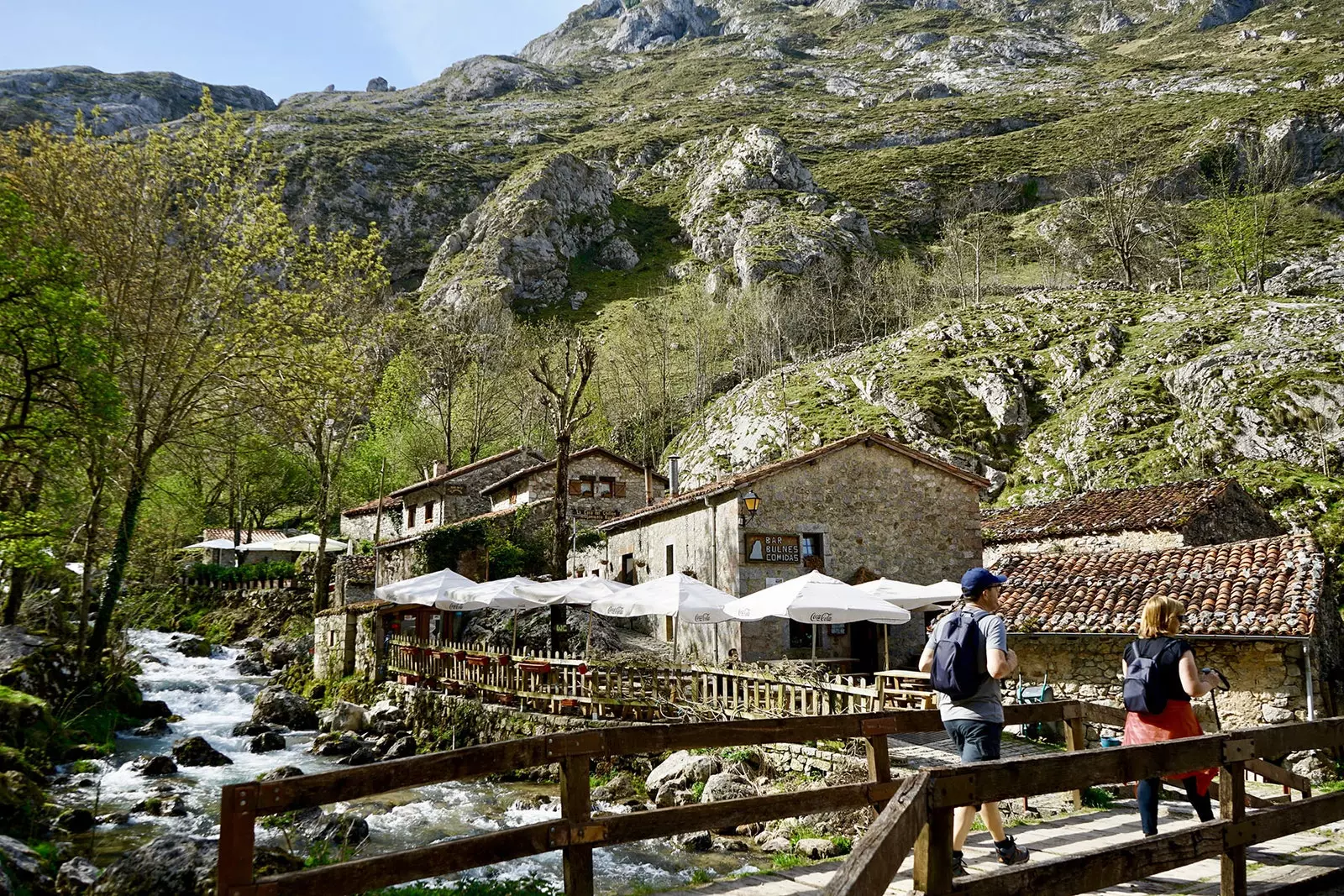
Village of Bulnes, isolated in the middle of the mountain
The path guides us through the sheepfold of Terenosa to Collau Vallejo. We continue along the silhouette of the enormous Jou Lluengo, a valley of glacial origin where the fog begins to appear and the goats watch our step. How small Bulnes looks down there and how big the Urriellu is up there.
Finally we reach the plain of Urriellu, at 1,960 meters of altitude. d, where the mountain atmosphere reigns around the refuge (€15) and the camp at the foot of the legendary peak.
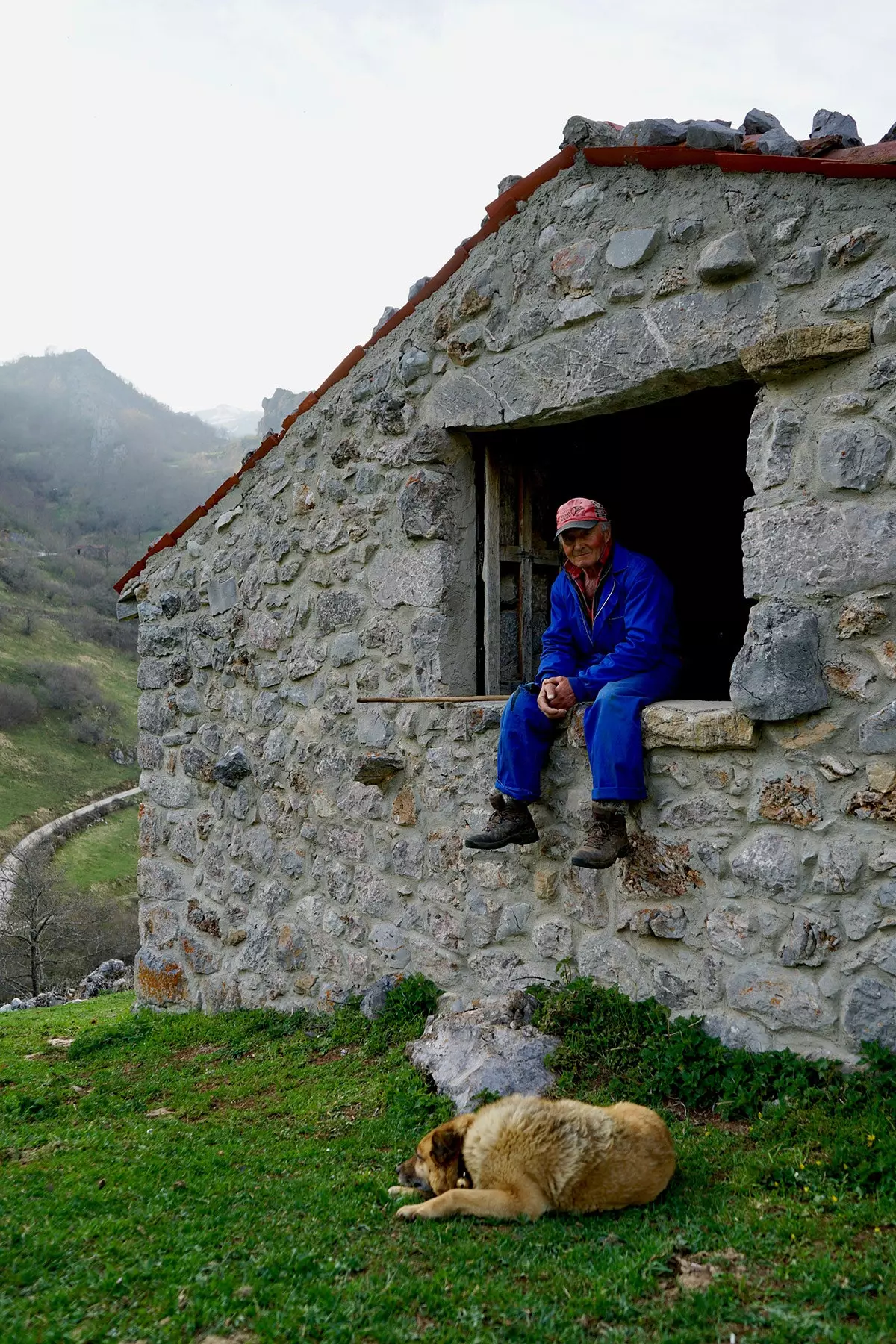
A shepherd watches over his flock
Here the climbers prepare to crown one of the most tempting summits in the mountaineering world and we...we will enjoy the atmosphere and the views from the base camp and we will begin to consider our way back to finish in Sotres, at the gates of the Eastern massif (or from Andara). We have lived enough adventure already.

The Parador de Cangas de Onis
to eat, we chose the ** Peña Castil Restaurant in Sotres.** Quality traditional cuisine to regain strength after the ascent to Urriellu (€20)
and to sleep , luxury and sobriety in a historic monastery on the banks of the Sella: the ** Parador de Cangas de Onís ** (€100-200). Or we can also choose the option of Inheritance of the slope , a wonderful village house in Llenín (Cangas de Onís) with views of the western massif (from €60).
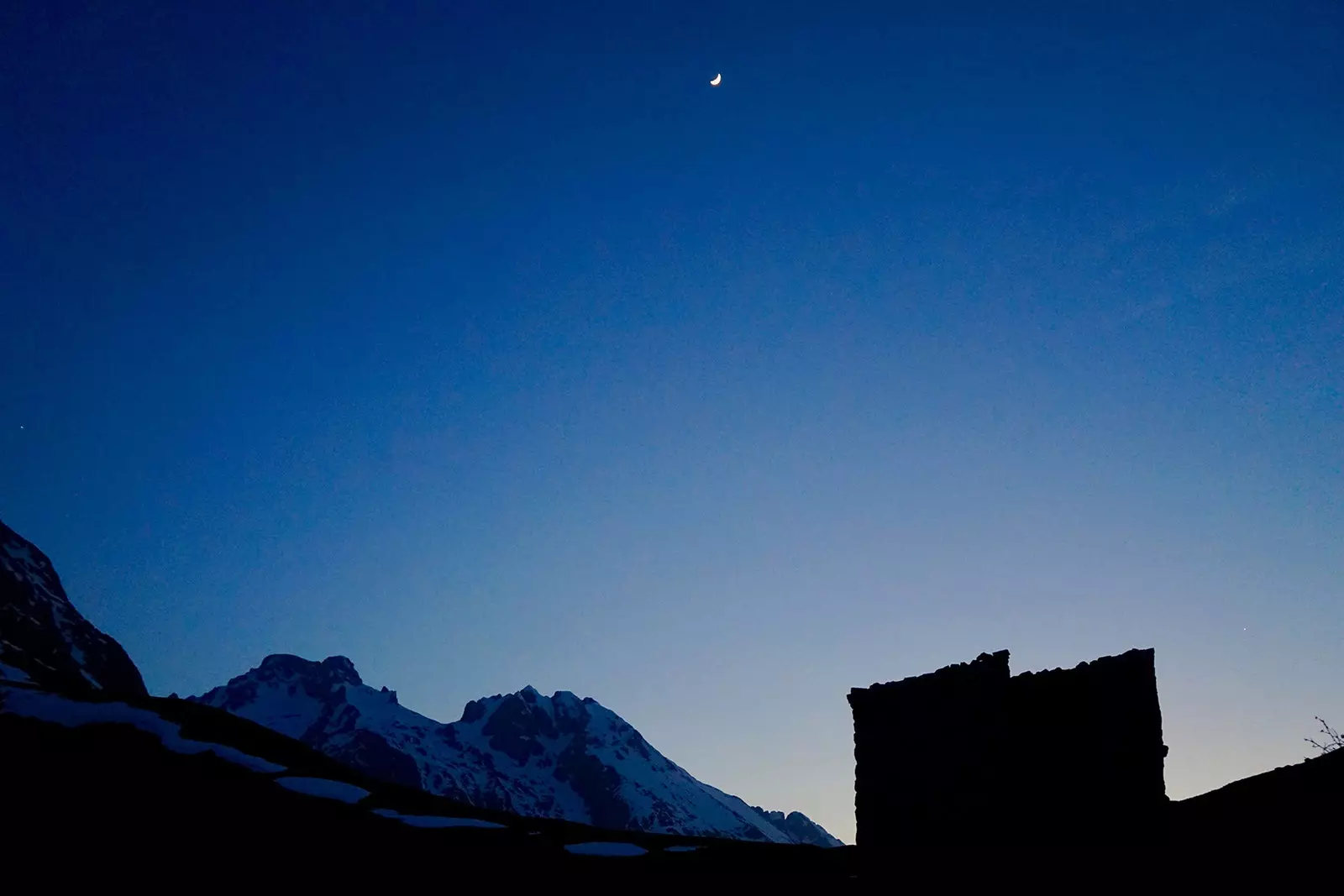
Collado de Pandebano
